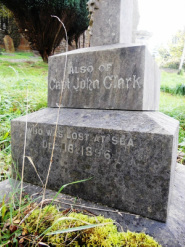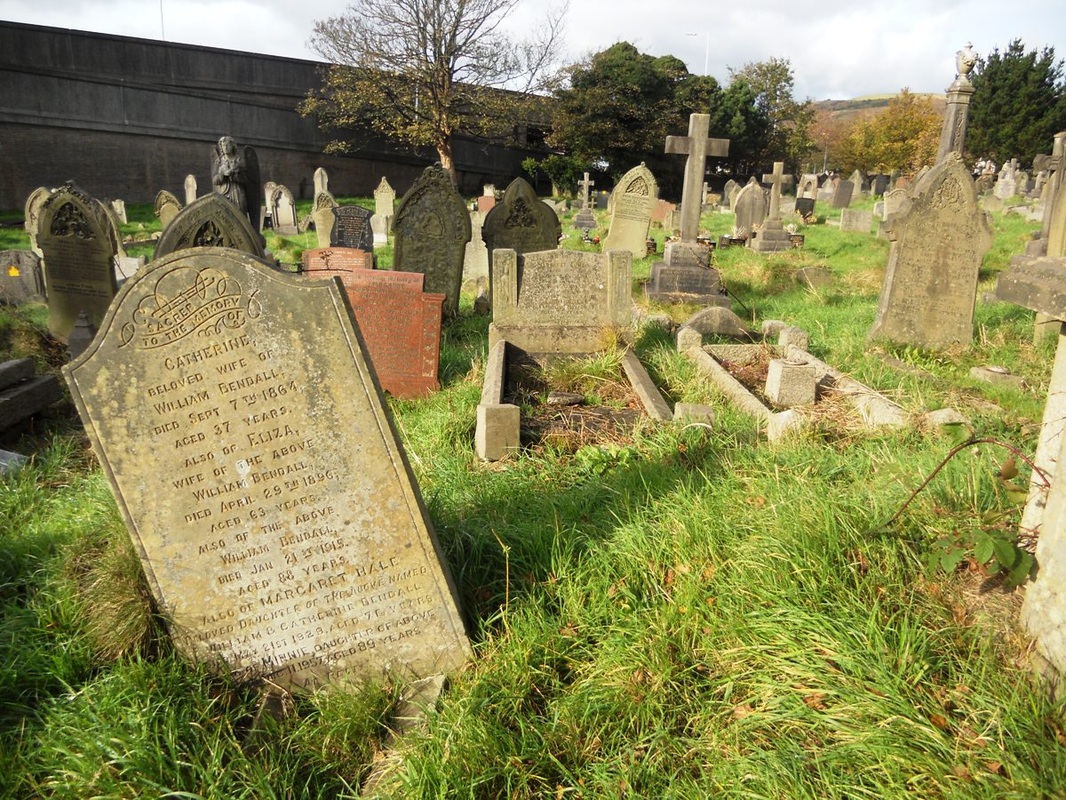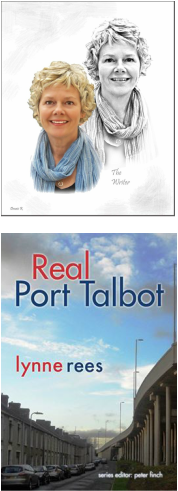
This is a gravestone in Holy Cross churchyard in Tan y Groes Street. It was the phrase 'Lost at Sea' that made me stop and take the photograph, the power of those words to conjure stories of shipwrecks and bravery, of storms and of a family waiting at home for news. I will try and find the story that belongs to Capt. John Clark.
Holy Cross was built in 1827. CRM Talbot of the Margam Estate donated the land at Tonygroes Farm to build an Anglican chapel of ease that would be more accessible for the people of Taibach. The mother church, the Abbey Church of St Mary's at Margam, was over two miles away.
It was built on a field called Pedair erw (Four acre) and the services were originally held in Welsh and later in English.
After the completion of St. Theodore's (1897), on Talbot Road, the new Parish of St Theodore's was created and Holy Cross became its subsidiary and was mainly used as a Sunday school. It underwent renovation at the beginning of the 20th century and again in 1915. Electricity was installed in 1949.
There were services at Holy Cross until 2008 when the condition of the building was judged too dangerous for worship and too expensive to repair. It closed formally on 31st December that year and was declared redundant by the Archbishop of Wales in 2009 but it hasn't yet been sold.
A lot of the graves have yellow stickers on them, warning you that they're likely to topple. So much of the graveyard is overgrown and in disrepair; the names engraved into stone are ivy wrapped and worn. I met a man there on one of my visits, laying flowers on his wife's family's grave in the far left-hand corner, where the land slopes down towards the supporting wall of the motorway. His presence felt as if it was honouring all the other people buried there too, among them some of the victims from the Morfa Colliery disaster in 1890 that killed 87 men. As if only by walking through he was saying, 'You are not forgotten.'
Holy Cross was built in 1827. CRM Talbot of the Margam Estate donated the land at Tonygroes Farm to build an Anglican chapel of ease that would be more accessible for the people of Taibach. The mother church, the Abbey Church of St Mary's at Margam, was over two miles away.
It was built on a field called Pedair erw (Four acre) and the services were originally held in Welsh and later in English.
After the completion of St. Theodore's (1897), on Talbot Road, the new Parish of St Theodore's was created and Holy Cross became its subsidiary and was mainly used as a Sunday school. It underwent renovation at the beginning of the 20th century and again in 1915. Electricity was installed in 1949.
There were services at Holy Cross until 2008 when the condition of the building was judged too dangerous for worship and too expensive to repair. It closed formally on 31st December that year and was declared redundant by the Archbishop of Wales in 2009 but it hasn't yet been sold.
A lot of the graves have yellow stickers on them, warning you that they're likely to topple. So much of the graveyard is overgrown and in disrepair; the names engraved into stone are ivy wrapped and worn. I met a man there on one of my visits, laying flowers on his wife's family's grave in the far left-hand corner, where the land slopes down towards the supporting wall of the motorway. His presence felt as if it was honouring all the other people buried there too, among them some of the victims from the Morfa Colliery disaster in 1890 that killed 87 men. As if only by walking through he was saying, 'You are not forgotten.'
Sources
Evans, A. Leslie, The History of Taibach & District (privately published 1963)
Roberts, Mike, 'Holy Cross Church', St Theodore's Website
Evans, A. Leslie, The History of Taibach & District (privately published 1963)
Roberts, Mike, 'Holy Cross Church', St Theodore's Website



 RSS Feed
RSS Feed